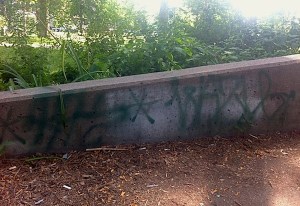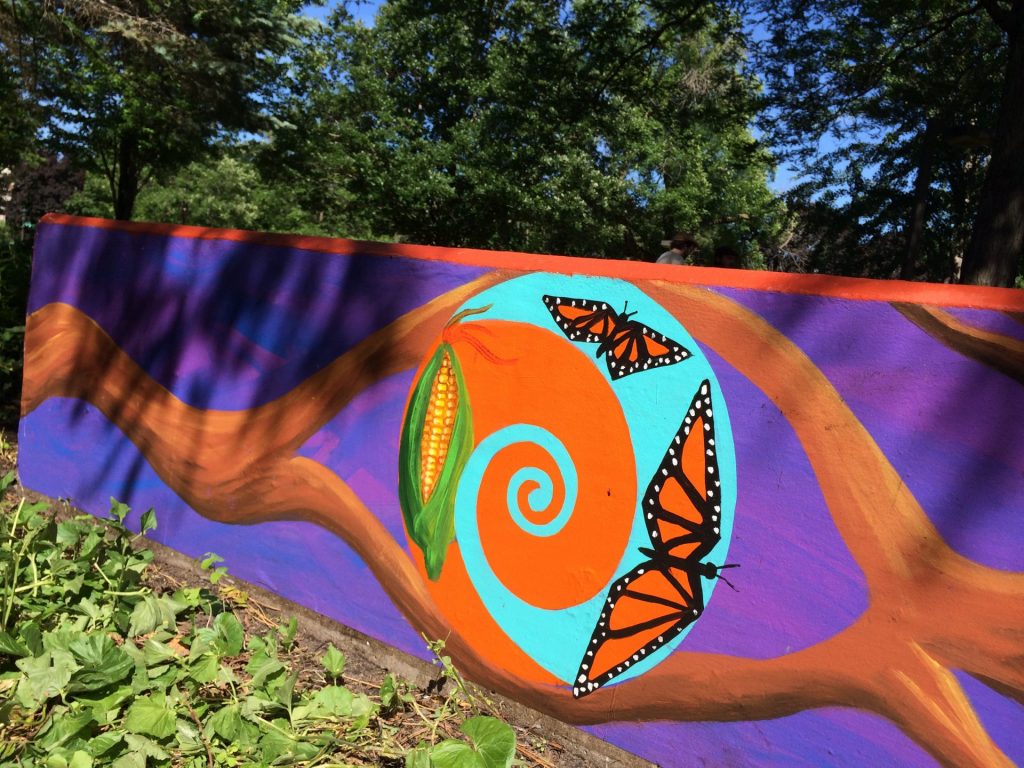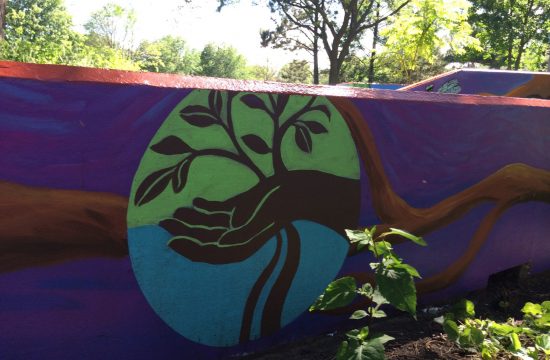One spring day, a year and a half ago, I was across the street from Friends School of Minnesota in Horton Park on recess duty with our 5th and 6th graders. Horton Park is a square-block city park in the Midway neighborhood of St. Paul. It is a mini-arboretum with an open field, native gardens, and some cement picnic tables that are bordered by a cement wall that ranges from one to three feet high. Friends School uses the park daily for recess.


On this particular day, a group of 6th graders were hanging out by the picnic tables when I walked over to chat with them. They pointed out the fresh graffiti that had been added to the existing collection on the table tops and cement wall. The kids were angry, and they felt that their space had been violated by the obscene drawings and profanity. They asked why people would do that to a space that is meant for everyone. They wanted to know how to stop the tagging from happening. At that moment, I wished I’d had an easy answer, but instead I told them we could report it, and the city would probably come and paint over it.

Last fall, in October 2012, the topic surfaced again. David Sobel, leader in developing the philosophy of Place-Based Education and author of several books, including Mapmaking With Children and Beyond Ecophobia: Reclaiming the Heart in Nature Education came to visit Friends School and lead teachers in a day of professional development along with an evening presentation open to the public.
We took a neighborhood walk with Sobel, and he pointed out a few opportunities for place-based education right here in the blocks surrounding Friends School. Standing there in the park, a couple of us referred to the cement wall and picnic tables with graffiti on them. Sobel talked about a mural, and I thought back to that conversation with the group of 6th graders in the park the previous spring.
Science teacher, Steve Moe, and I discussed it more throughout the fall. Steve made contact with the City of St. Paul about the idea, and they expressed interest in supporting the project along with an informal offer to supply the paint. As the year progressed, we were unable to find a place in our existing curriculum to put such a big project.
That’s when we decided to bring it up with the Middle School Student Council, whose focus is to do service projects that benefit people, animals, and the environment. In addition, the group of students I had that conversation with in the park the previous spring were all members. The students immediately got excited about the idea, and wanted to dive into the project right away.
Several of our Student Council meetings were spent brainstorming ideas for the mural. We began working with local muralist, Gustavo Lira. Gustavo spoke to the students about mural painting, image choice, symbolism, and color.
The students decided they’d like one side of the cement wall to look more natural, with tree roots morphing into various symbols representing the diversity of St. Paul. The roots will come over the top of the wall and continue to morph into a train scene, since the railroad played a major role in the development of St. Paul, particularly the Hamline-Midway neighborhood. The picnic tables will have gameboards, like checkers and chess, painted on them, with a border that compliments the mural.

Before getting too far into the project, we decided we should work to get formal permission from the City of St. Paul. The students wrote a proposal letter, and I sent it on to the city in May. In August, I was informed that there was a more formal proposal process for the installation of Public Art in St. Paul. I brought it back to the students to see if they were still interested, and they were. We worked to complete the formal proposal, focusing on the goal of graffiti prevention, and I submitted it. In the meantime, we waited for approval, we continued the design.

Last week, a group of five students presented their mural idea to the Hamline-Midway Coalition, our neighborhood community council, at their monthly board meeting. The students were well-received, and the Coalition offered us a letter of support. The following day, I received an email from the City of St. Paul approving the project.
Our work is far from over, but the project is on its way. In the coming months, the students will finish a scale design of the mural with Gustavo Lira, inform residents surrounding Horton Park, and acquire the supplies needed. Our hope is to paint the mural in March and install it in May.
– Melissa Anderson, Middle School Humanities Teacher
Update! The mural after it was completed…







